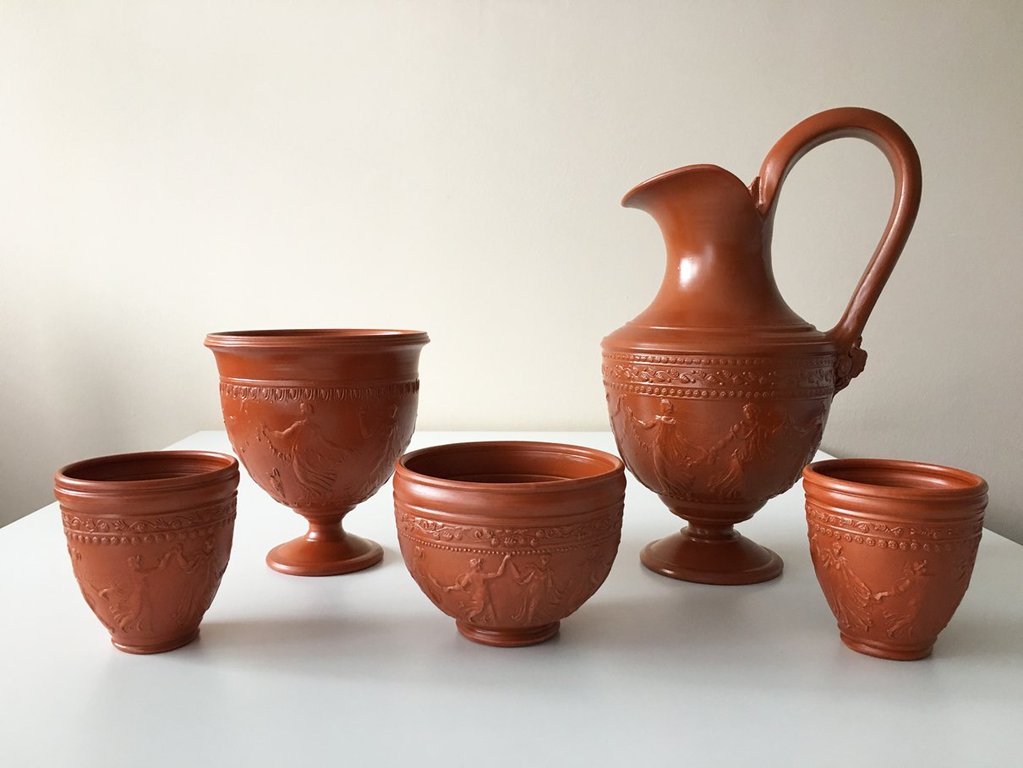Roman pottery was made with the kick wheel and the kiln firing. Before that time, pottery was made by hand and bonfire. This invention allowed pottery to be made with a potter’s wheel and a semi-permanent kiln. It could be made much faster and was more uniform. This pottery was thinner, harder, and more uniform than pottery that came before it, and it could be mass produced.
There are features that make Roman pottery stand apart from other types, and you can learn how to identify it. It is well-made, and it was an important part of daily living in ancient Rome. Continue reading to learn how to tell if pottery is Roman.
Examine the Patterns
While the ancient Greeks painted decoration on the pottery, the Romans preferred to engrave their pottery. The pottery was engraved with drawings or designs, and it could have words as well. The lip of bowls or vases would have designs etched in them, and some even had scenes engraved onto the sides or around the body of the bowl.
The engravings distinguish the Roman pottery from Greek pottery and other ancient forms. The Romans used the pottery for everything, so much of this pottery was well-made and mass produced. It was very utilitarian, and they used it for food, carrying water, making statues and lamps, and more. The patterns in the engraving help you to know that it is Roman.
Look at the Structure
Roman pottery was divided into two types: fine wares and course wares. They were different types of pottery used for different purposes, but you will find that the majority of Roman pottery falls into one of these categories.
Fine wares are formal pottery that were used for formal occasions. They would be used at celebrations and the pieces were delicate with thin walls. They had a glassy surface that looked shiny. They used a lead glaze to make them appear this way. The most common kind of fine ware was pottery with a red glaze called terra sigillata. It was introduced by artisans in Rome, but it quickly spread throughout all of the Roman lands.
Course wares were made for daily use, and they were more utilitarian. They would carry liquids or eat off of this kind of pottery. They were inexpensive items, and they had thick walls and were made to handle wear and tear. The slaves and the poor used this type of pottery because they couldn’t afford fine wares.
Look for Relief Work
In addition to engraving pottery, the Romans liked to do relief work. You can find scenes of animals, crops, and people created through a relief on the sides of bowls and vases. They would create the relief and then glaze the pottery afterward. This made it shiny and more attractive.
When you see pottery with a relief on the side, you can be pretty sure that it is Roman pottery. They had a unique style and form, and their pieces are distinct to their craftsmanship. If you want to get some help learning about Roman pottery, you can take a course. There are many identifying features that will help you learn how to tell the difference between Roman pottery and other types.
The Romans were mass manufacturers, and they made a lot of pottery for everyday living. It is found all over the Roman Empire, and it was incredibly important in their lives. The fact that it survives today shows how well-made it is. The Romans did not have any equivalent to the vase painting that took place in ancient Greece. They engraved their pottery and made relief drawings on them. This is a distinguishing feature that is particularly Roman. When you learn the features that set Roman pottery apart, you will be able to recognize it when you see it.
Resources
